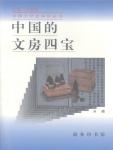Chapter 1 foreword
Our great Chinese nation has created a splendid culture in the long-term historical development.These include Chinese characters, calligraphy and painting art, as well as the tools and materials used to express them - the "Four Treasures of the Study", namely brushes, inks, paper, and inkstones.
People are engaged in cultural activities and artistic creation, and the "study room" is an important place for their activities.Historically, the word "study room" is generally interpreted as "study room".For example, in the poem of Du Mu, a poet of the Tang Dynasty, he said: "The red bow follows the arsenal, and the golden seal follows the study room." ("Fan Chuan Ji")
Although pens, inks, paper, and inkstones all came into being earlier, the term "four treasures of the study" appeared later. The poet Mei Yaochen (1002-1060 A.D.) of the Song Dynasty said that "the four treasures of the study came out of two counties, and recently the appreciation of the emperor and Yu" ("Wanling Collection") poems. The "Four Treasures of the Study" are also known as the "Four Scholars of the Study". The Song Dynasty poet Lu You (1125-1210 A.D.) said in his poem: "When the water returns to the mountains, the number of visitors is rare, and the four scholars of the study depend on each other alone." ("Jiannan Poetry") draft")
The first work that unified and described the "Four Treasures of the Study" was the book "Four Puzzles of the Study" written by Su Yijian in the Song Dynasty.The book is divided into five volumes, Juan 1 and Juan 2 are pen notation; Juan 3 is inkstone notation; Juan 4 is paper notation; and Juan 5 is ink notation.
The book "Four Spectrum of the Study Room" narrates and comments on each kind of stationery from the aspects of history, production, anecdotes, poetry and prose.Just as Xu Xuan [xuanxuan] said in the preface to the book: "From now on, we will discuss its origin, record its facts, take part in the changes from ancient to modern times, and then follow up the works of praise, each according to its category, in an orderly manner. , both refined and broad."
The purpose of Su Yijian compiling this book is to clarify the cultural role and value of the "Four Treasures of the Study".Just as he said in the "post-preface" of the book: "I see that he decided to reveal the ancient ways and carry forward the essence of calligraphy. There are four of them, and they can be passed on endlessly." Pointing out the role of the "four treasures of the study" is Spread the "ancient way", publicize traditional cultural thoughts, and "carry forward the essence of calligraphy" to express the art of calligraphy and painting.Therefore, if we want to spread and develop Chinese culture well and "infinitely spread it", we need to pay attention to the "Four Treasures of the Study", and we should study the "Four Elements".Based on the above purposes, the editors consulted relevant literature records, collected relevant records, and compiled the book "Four Spectrums of Study". "Four Books of Study" is also known as "Four Books of Study".
In the "study room", in addition to pens, ink, paper, and inkstone, there are also many other stationery, which are equipped to cooperate with writing and painting activities, and to protect and place the "Four Treasures".Such as pen holder, brush washer, pen hanger, pen boat, pen stand, ink box, inkstone box, inkstone drop, inkstone bowl, paperweight, printing box, arm rest, pillow wrist, felt pad, sticker frame and so on.They are good at "study room" and add brilliance to "four treasures".In the Ming Dynasty, Tu Long's "Stationery Yabian" and Gao Lian's "Eight Notes on Zunsheng" in the "Dissertation Utensils" section, as well as other documents, have very good descriptions and discussions on this.
There are still many works on the "Four Treasures of the Study" in history;Based on the above aspects, this book briefly introduces the history and knowledge of the "Four Treasures of the Study" and their relationship with Chinese civilization.

